Dell EMC PowerEdge R6415 review: An EPYC win for AMD
A truly epic single-socket rack server
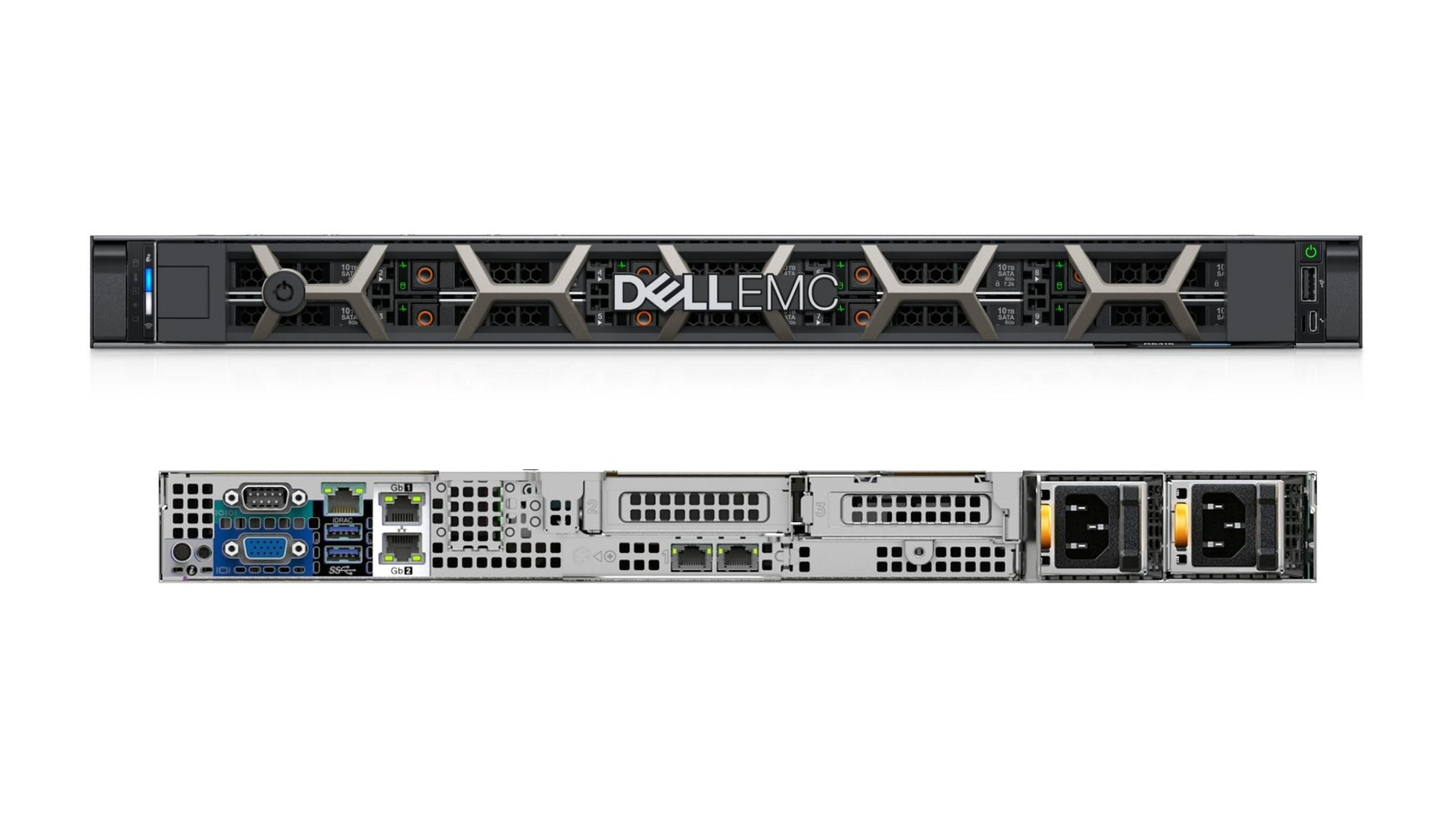

With AMD’s EPYC at the helm, the PowerEdge R6415 delivers a high core count and memory capacity normally reserved for more expensive and power-hungry 2P rack servers
-
+
Huge core density; Massive memory capacity; Enterprise-class storage features, NVMe support, Compact 1U rack chassis
-
-
No performance graphs in the iDRAC9 console; 128GB LRDIMMs not yet available

Dell EMC's PowerEdge R6415 shows AMD is back in the server game - and this time it means business. Showing off the new EPYC Series 7000 CPUs, the R6415 is aimed at enterprises that want a no-comprises single-socket server that can handle heavy-duty workloads.
Unlike Intel's Xeon Scalable Processor (SP) family, the EPYC CPUs are single-package SoCs (system on chips) so no chipsets are required. With AMD's Zen core technology at their heart, the EPYCs have eight integral 2,600MHz memory channels supporting up to 2TB as standard, along with 128 PCI-Express (PCIe) lanes.
The bottom line is EPYC is offering enterprises a more affordable alternative to purchasing 2P servers to get the core count, memory capacity and I/O bandwidth they want. EPYC targets the Xeon Scalable Silver and Gold series, which in 1P deployments support up to 768GB of memory, or 1.5TB for the Gold 6100 'M' models.
To put this all into perspective, Dell EMC's elderly PowerEdge R330 was (up until now) its most powerful 1P rack server with support for basic quad-core Xeon E3-1200 v6 CPUs and 64GB of memory. The R6415 blows it out of the water by offering up to 32 physical and 64 logical cores, a 32-fold increase in memory capacity and a host of advanced storage features.
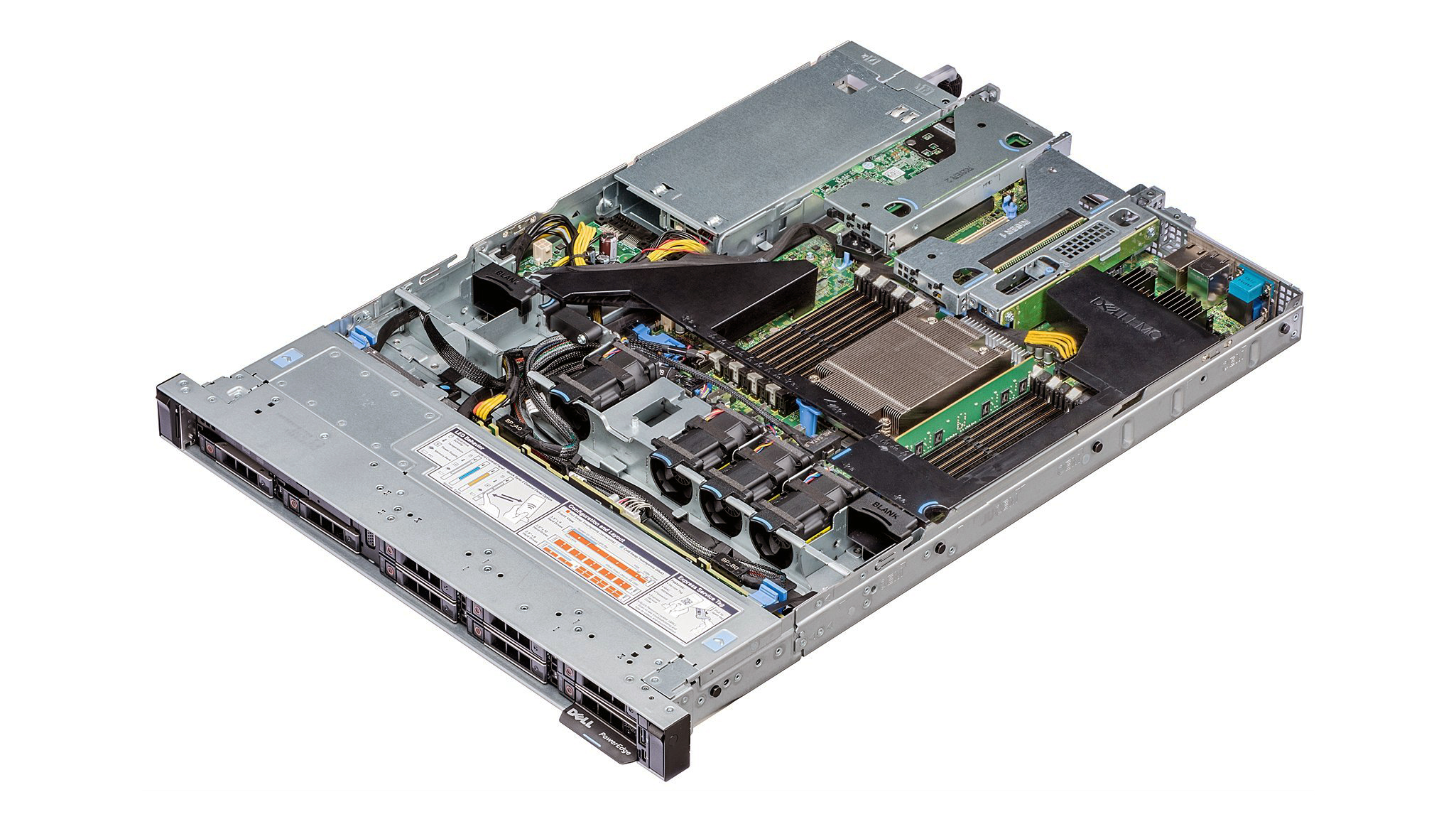
Dell EMC PowerEdge R6415: EPYC processor
Our review system was supplied with a 24-core 2GHz AMD EPYC 7401P partnered by 128GB of memory. Topped off with a large passive heatsink, the CPU socket sits central to the motherboard and is flanked on each side by 8 DIMM slots.
EPYCs with the 'P' designation are designed for single-socket use whereas those without this support 1P and 2P servers. For the latter, both chips use 64 PCIe lanes for inter-socket communication via AMD's Infinity Fabric technology.
Core count and memory capacity are two key areas where EPYC challenges the Xeon SP Silver and Gold series. It can even put more cores in your socket than Xeon SP Platinum as the R6415 is also available with the mighty 32-core 2.2GHz EPYC 7601.
As the EPYC has on-chip memory controllers there's no need to add a second processor to get the maximum capacity. The 16 DIMM slots support RDIMM and LRDIMM memory so, when Dell EMC makes 128GB LRDIMM modules available later this year, you can go right up to the 2TB maximum.
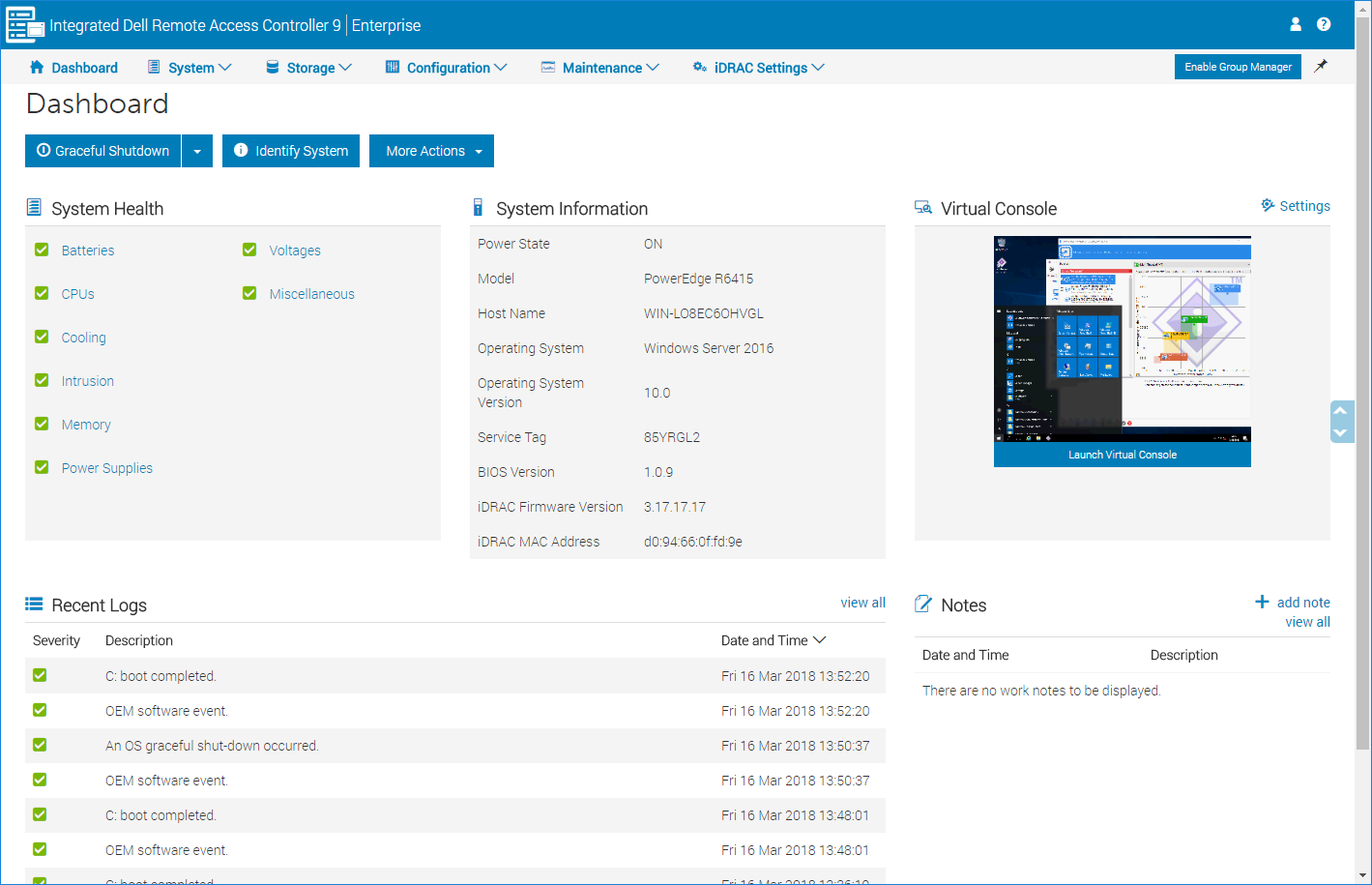
Dell EMC PowerEdge R6415: Deployment and management
The R6415 has the same iDRAC9 controller as its Xeon SP stable-mates so you get a classy set of remote management and security features. Its HTML5 web interface provides a detailed status overview along with plenty of operational data on system and component temperatures, cooling and voltages.
We noticed that the System page is missing the Performance tab and is unable to show usage graphs for the CPU, memory and I/O. Dell EMC advised us that it is currently working on an iDRAC9 update for the AMD architecture.
The embedded LifeCycle Controller made light work of OS deployment and helped us load Windows Server 2016 with all the right drivers inside 30 minutes. An optional feature we highly recommend is the Quick Sync 2 module which costs 180 and sits in the server's left rack mount ear.
This allowed us to connect our iPad directly to the server over Bluetooth and monitor it using the OpenManage Mobile (OMM) iOS app. For general systems management, OpenManage Enterprise is (still!) under development but our Hyper-V VM of the latest technical release worked fine with the R6415 and provided plenty of useful management tools.
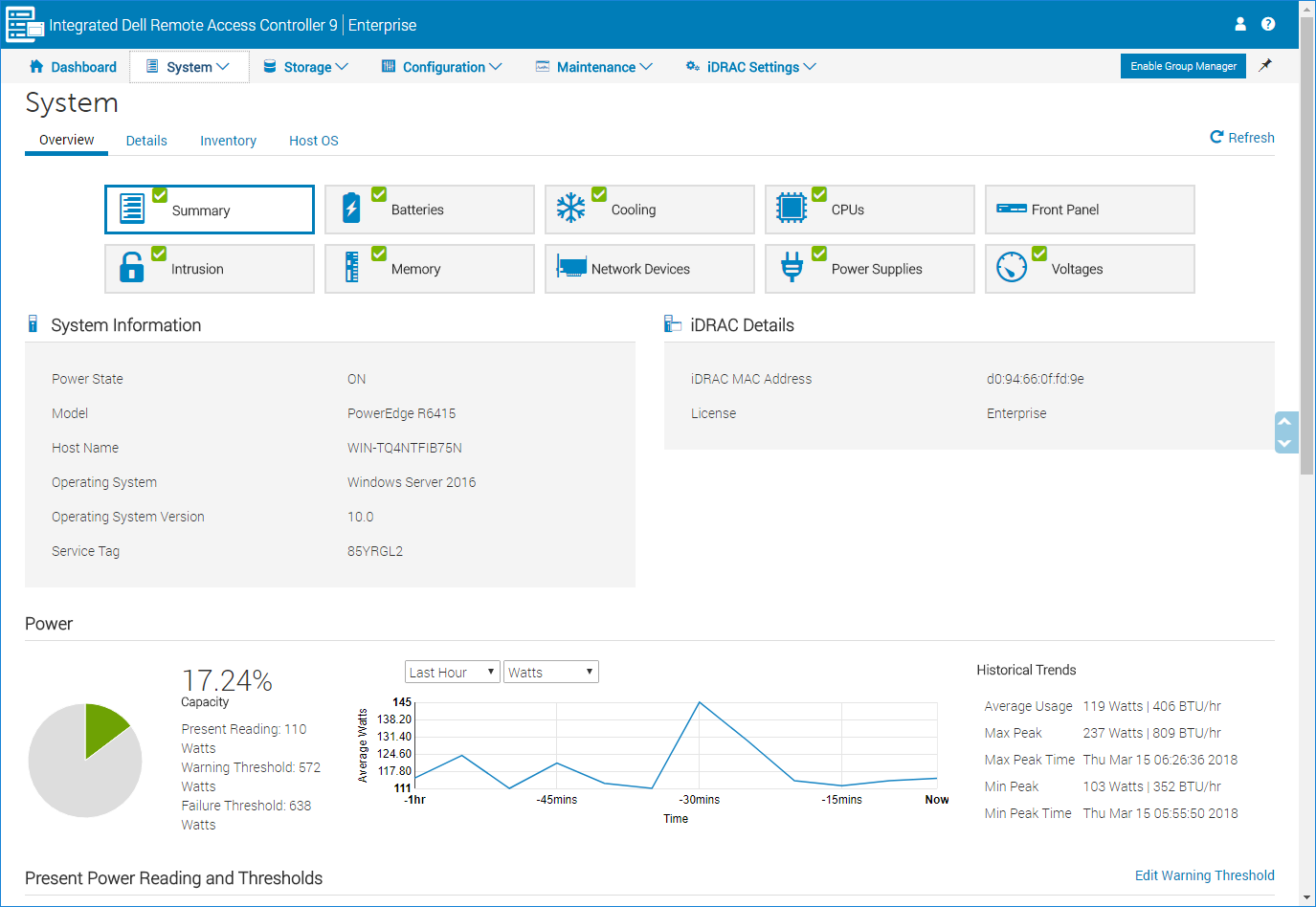
Dell EMC PowerEdge R6415: Storage features
Storage is another area where the R6415 beats the current crop of 1P servers. We have the 8 hot-swap SFF bay model with optical drive but you can opt for a quartet of LFF drives or go for a full house of 10 SFF bays.
The latter brings up to 10 PCIe NVMe SSDs into play. The motherboard has five embedded dual-port PCIe sockets which are cabled directly to the corresponding ports on the backplane so you can mix and match hard disks and NVMe SSDs.
The motherboard doesn't have an embedded RAID controller so the minimum required specification is the PERC H330 Mini card which we've included in the price shown. This snaps into a dedicated slot at the rear of the motherboard, is cabled directly to the backplane and supports SATA/SAS3 drives plus stripes, mirrors and RAID5 arrays.
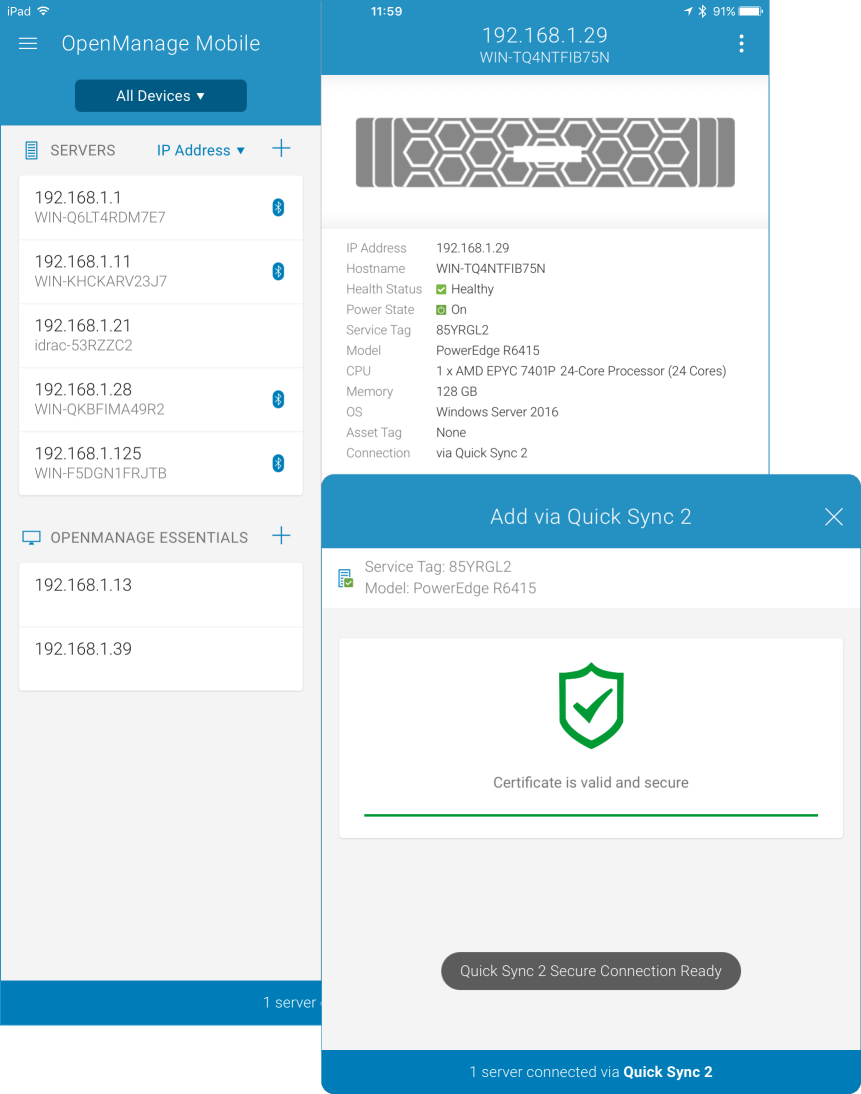
Dell EMC PowerEdge R6415: Power and expansion
Our system includes two hot-swap 550W Platinum PSUs and we found consumption to be comparatively low; the server drew 115W with the OS in idle and 253W with the EPYC under extreme load. A HPE ProLiant DL360 Gen10 with two 12-core 2.3GHz Xeon Gold 5118 CPUs, 32GB of memory and one SFF drive was measured drawing 82W in idle and a higher 282W under load.
Dell EMC's BOSS (boot optimized storage solution) M.2 SSD card isn't currently available for the R6415 but you can add its dual-slot microSD card module. Designed for embedded hypervisors, it supports card capacities up to 64GB and performs mirroring across them.
The R6415 comes with dual embedded Gigabit ports and we've included the dual-port Gigabit LOM card which fits in a dedicated slot. Other options available are dual 10GbE copper and fibre LOMs, or you can add a dual-slot PCIe riser and choose from 10Gbe and 25GbE network adapter cards.
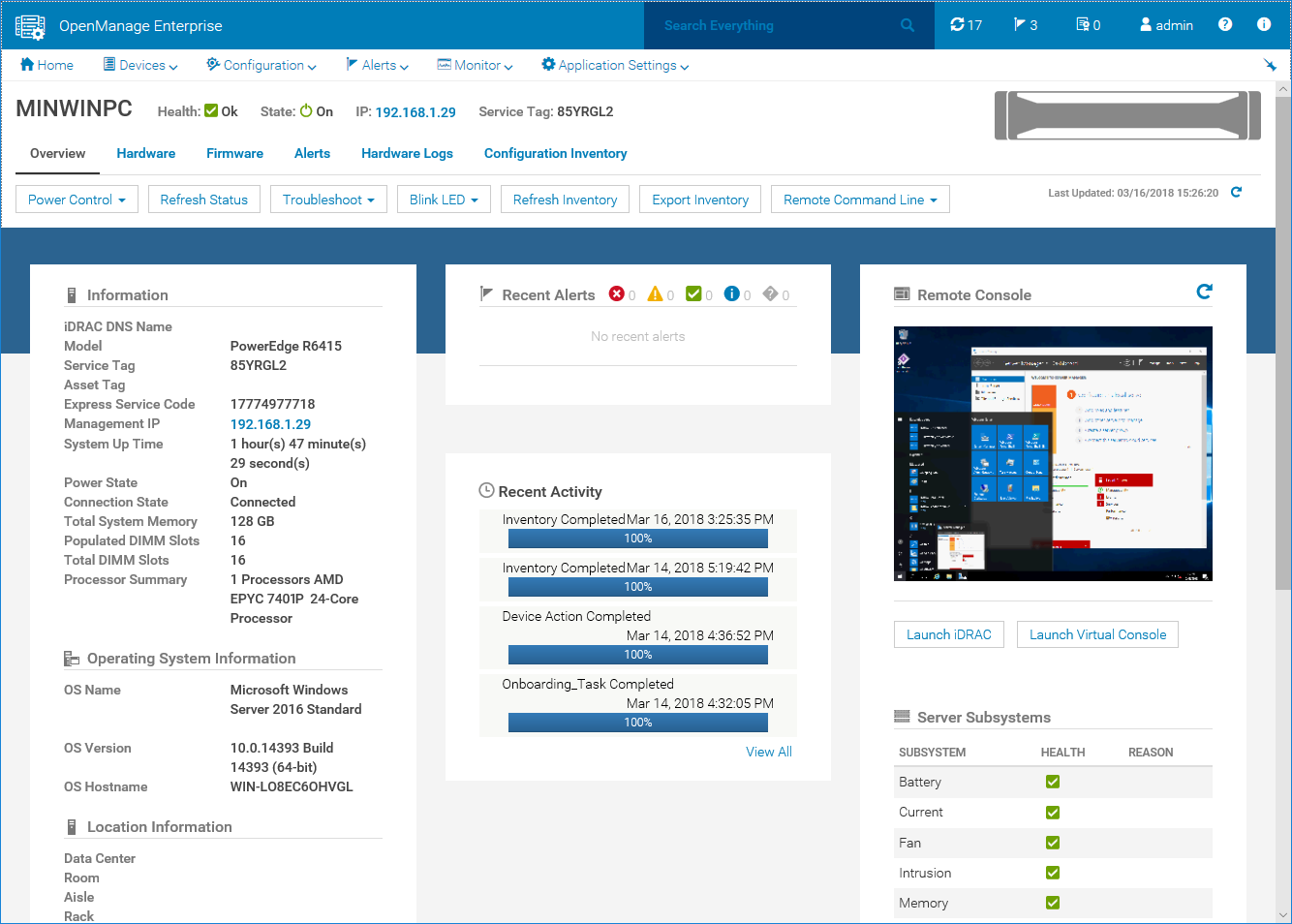
Dell EMC PowerEdge R6415: Verdict
The PowerEdge R6415 is a game changer for single-socket rack servers as with AMD's EPYC on board, it offers an unbeatable core density and memory capacity. A great choice for high-density computing and virtualization, it also comes with impressive storage credentials all packed into a surprisingly compact 1U rack chassis.
Verdict
With AMD’s EPYC at the helm, the PowerEdge R6415 delivers a high core count and memory capacity normally reserved for more expensive and power-hungry 2P rack servers
Chassis: 1U rack
CPU: 2GHz 24-core AMD EPYC 7401P
Memory: 128GB ECC DDR4 RDIMM (max 2TB with 128GB LRDIMMs)
Storage bays: 8 x SFF hot-swap (max 10)
RAID: Dell PERC H330 Mini
Array support: RAID0, 1, 10, 5, 50
Storage included: 3 x 1TB 7.2K 12Gbps NLSAS SFF HDDs
Network: 2 x Gigabit/2 x Gigabit Mezzanine LOM
Expansion: 2 x PCI-e 3.0 slots (with optional riser)
Power: 2 x 550W Platinum Plus hot-swap PSUs
Management: Dell iDRAC9 Enterprise
Warranty: 3Yr ProSupport On-Site NBD
Get the ITPro daily newsletter
Sign up today and you will receive a free copy of our Future Focus 2025 report - the leading guidance on AI, cybersecurity and other IT challenges as per 700+ senior executives
Dave is an IT consultant and freelance journalist specialising in hands-on reviews of computer networking products covering all market sectors from small businesses to enterprises. Founder of Binary Testing Ltd – the UK’s premier independent network testing laboratory - Dave has over 45 years of experience in the IT industry.
Dave has produced many thousands of in-depth business networking product reviews from his lab which have been reproduced globally. Writing for ITPro and its sister title, PC Pro, he covers all areas of business IT infrastructure, including servers, storage, network security, data protection, cloud, infrastructure and services.
-
 Westcon-Comstor and Vectra AI launch brace of new channel initiatives
Westcon-Comstor and Vectra AI launch brace of new channel initiativesNews Westcon-Comstor and Vectra AI have announced the launch of two new channel growth initiatives focused on the managed security service provider (MSSP) space and AWS Marketplace.
By Daniel Todd Published
-
 Third time lucky? Microsoft finally begins roll-out of controversial Recall feature
Third time lucky? Microsoft finally begins roll-out of controversial Recall featureNews The Windows Recall feature has been plagued by setbacks and backlash from security professionals
By Emma Woollacott Published
-
 The UK government wants quantum technology out of the lab and in the hands of enterprises
The UK government wants quantum technology out of the lab and in the hands of enterprisesNews The UK government has unveiled plans to invest £121 million in quantum computing projects in an effort to drive real-world applications and adoption rates.
By Emma Woollacott Published